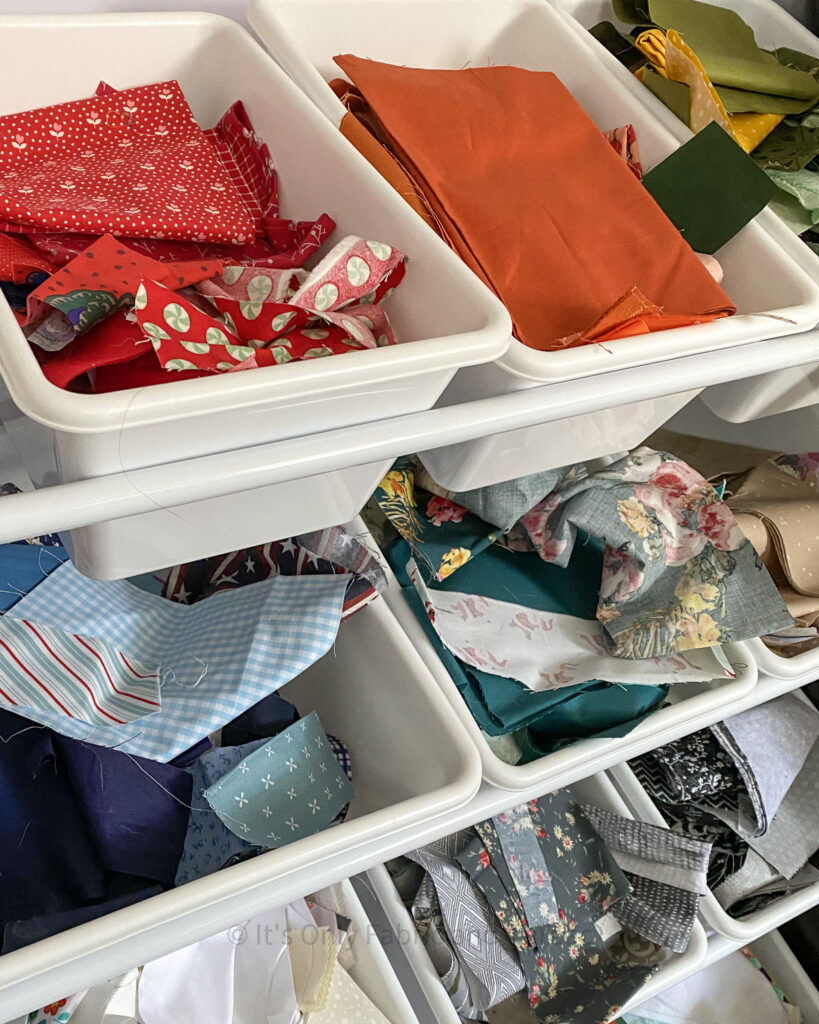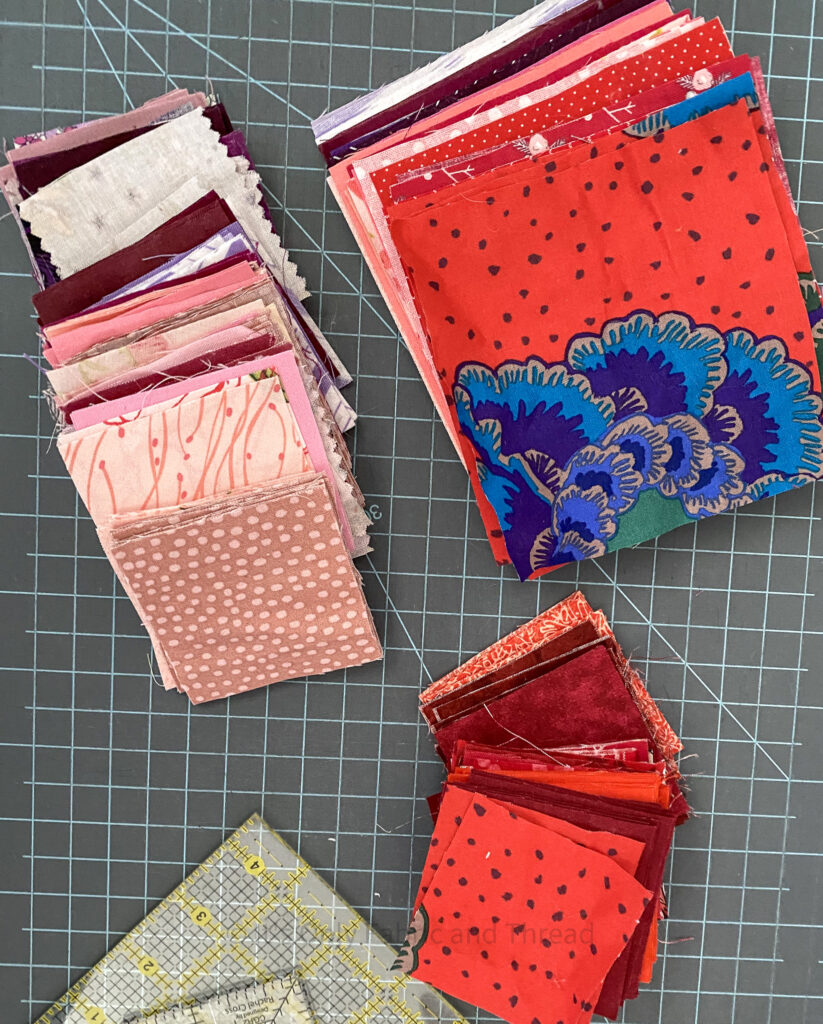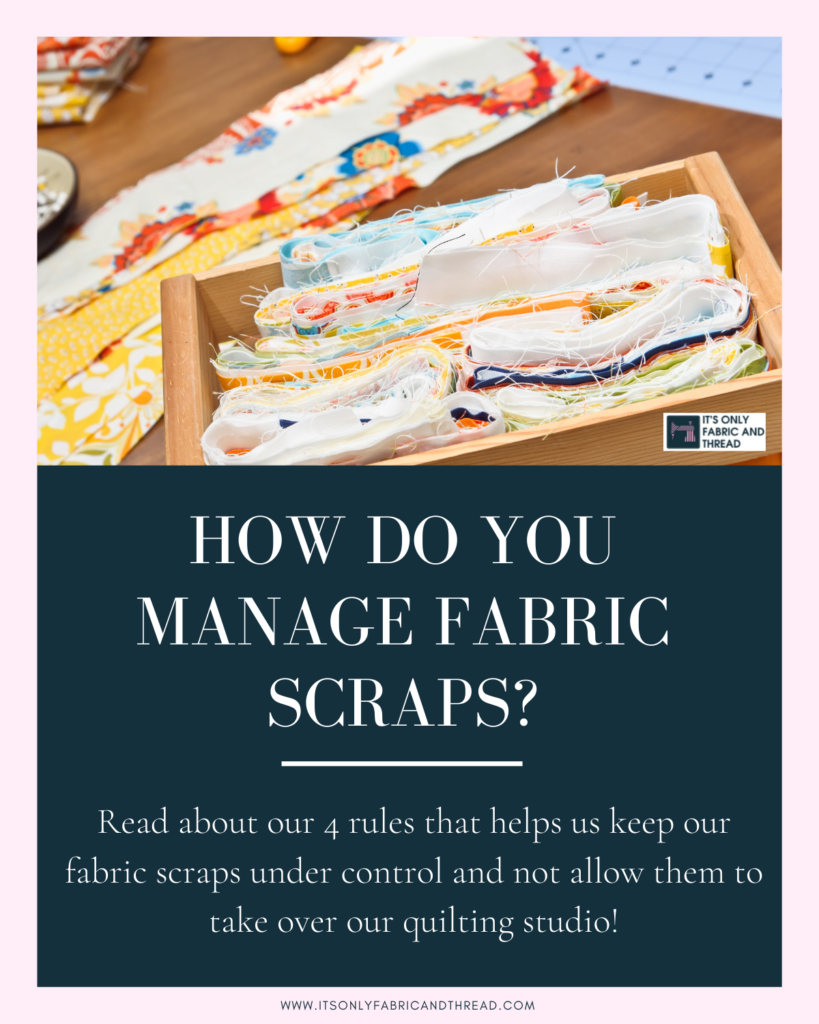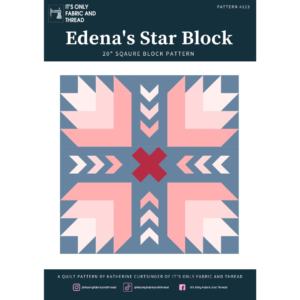I’ve been working on a lot of quits lately and let’s be honest: they generate lots of fabric scraps. I recently transitioned to a color sorting system for my fabric scraps using a toy organizer I grabbed off Amazon. This storage and sorting system has been a game changer for me and really allows me to see what colors of scraps I have a lot of. But I still had to implement some rules to manage my scraps so they don’t get out of hand because I find that I like to keep tiny scraps that I will never ever use and then get very overwhelmed.

What is a fabric scrap?
First thing first, what is a fabric scrap?
Every quilter has a different definition of what a fabric scrap is to them. I have found that what quilters consider to be “scraps” varies widely – the size of scraps worth saving runs the gamut. Some will save the tiniest pieces, while 5” squares are the cutoff for others.
For me, I define a scrap as smaller than a fat quarter (which typically measures 18″ x 22″). Anything under that size goes into my color sorted scrap bins. I don’t know about you, but I don’t enjoy reaching into my stash for a fat quarter and then find its partially used! I then take these bins and trim them down to usable sizes and store them with their same sized counterparts.

Here are my 4 rules for managing fabric scraps.
1. Scraps should always be sorted after projects.
I try my best to always address scraps immediately after I wrap up a project. If I don’t they will likely end up in the corner of doom in my studio and I won’t address them for months.
Since I switched to a color sorting system, this has been a lot easier for me to maintain. At the end of the day it honestly goes back to creating that habit to address scraps after each project and just making it part of my routine. I also find joy in seeing all of my rainbow bins with scraps and it inspires me to write more scrappy quilt patterns to release in the future.
2. If the color bin is full: It is time to cut the scraps down to usable sizes.
I love being able to see all the pretty colors in my color organizer, but when they start to overflow I will spend several days or weekends trimming down the contents of each bin.
For me, I have several sizes that I trim scraps into:
- 5” squares
- 4.5″ squares (this is for a specific project currently that I’ll be sharing later this year)
- 2.5” squares
- 2.5” strips
- 1.5” squares (One day I’m going to make a postage stamp quilt with these…)
Anything smaller than a 1.5” square goes into the trash. I know full and well that I won’t use anything smaller than that.
3. If my trimmed usable scraps are becoming too much to store – I’m making a scrap quilt!
I don’t always know what kind of scrap quilt I want to make when I get to this point… but since the sizes that I trim them to are also precuts (5″ squares, 2.5″ strips and 2.5″ squares) I can typically find a pattern that is easy to make and relatively quick too.
Free jelly roll strip patterns
You could also turn those strips and squares into one of our free patterns!
4. At least once a year do a scrap purge.
I know that I am always saving scraps for future scrappy projects or even for blocks in a quilty bee. However, sometimes I just become very overwhelmed and sitting down to handle scraps is way too much for me. In these instances I do a purge.
If you have been saving scraps for a while, odds are you have some that no longer bring you joy or that you see yourself using in the future. Don’t be afraid o donate those scraps to a quilty friend, a guild member, or someone who you know will enjoy the scraps and bring them new life.
Remember: Your scraps shouldn’t take over your studio or your life. Full permission to release scraps that don’t bring you joy!

One of the big takeaways is that your fabric scraps should still bring you joy. If for some reason trying to manage your scraps is causing you worry or stress, take a step back and ask if keeping the scraps are really worth it?
At the end of the day, the way you both sort and manage your fabric scraps has to work for you and be sustainable long term. What works best for me may not necessarily work best for you – but trial and error is the best way to figure out a fabric scrap system that works.





